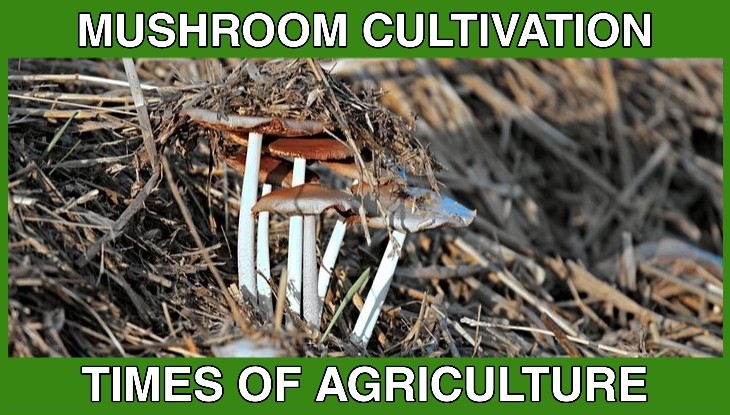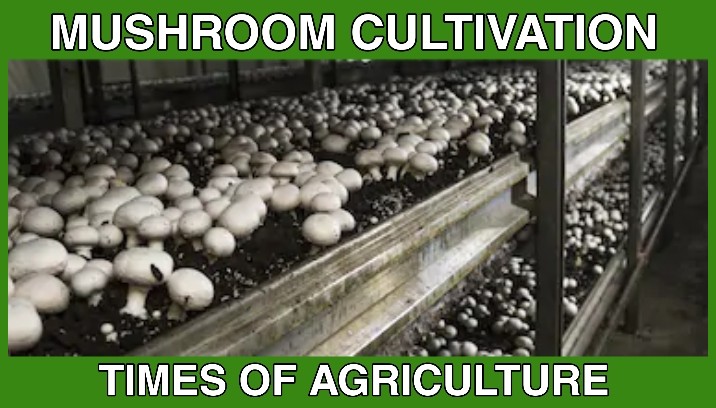How to Start Commercial Mushroom Farming Guide
Introduction to Mushroom Farming
Mushroom cultivation has tremendous scope, and it has excellent medicinal properties. It has blood purifying properties with no cholesterol. It is highly rich in vitamins like riboflavin and niacin and minerals like selenium and potassium. Mushroom farming is also known as ‘Fungiculture’.
In this post, we will let you know about mushroom cultivation steps, the scope of mushroom cultivation, types of mushrooms grown, mushroom farming at home, mushroom farming training, organic mushroom farming in India, oyster mushroom farming, mushroom cultivation trainings, cost of mushroom cultivation in India, types of mushroom cultivation, oyster mushroom cultivation, milky mushroom cultivation, organic mushroom farming in India.
Scope of Mushroom Farming
Mushroom production is one of the most profitable agribusinesses that requires less space and low investment. Mushroom cultivation requires a very little space and even provides an employment opportunity even for educated young people. Integrated farming systems along with mushroom production provides higher income to the rural people. Mushroom for pharmaceutical industries also presents immense opportunities in the global market.
Types of mushroom grown in India for Mushroom Farming
There are three different types of mushroom in India namely button mushroom, straw mushroom and oyster mushroom. Paddy straw mushroom generally grows in higher temperatures. Button mushrooms are usually grown during winter. Oyster mushrooms are grown in northern plains.

Button Mushroom Farming
It generally has two components namely compost preparation and the crop management. The compost is the medium in which the mushroom mycelium growth takes place. However, compost made from horse manure and wheat straw is ideal for mushroom production. There are two methods of composting namely long method and short method of composting. The time taken for composting in the long method needs three to four weeks, whereas the short method requires only 12-15 days. In the long method of composting, pasteurization is avoided, which will make the compost poor in quality and gives less yield.
Natural compost is traditionally prepared by using horse manure and the barn waste consisting of straw bedding of wheat of barley. These are generally taken in the proportion of 4:3 and to this mixture, about 100 kg of chicken manure and 5 kg of urea are added per ton of the medium.
Button Mushroom Cultivation steps
The manure is kept as heap for about one-meter height and is regularly examined and turns down repeatedly. This is done for every three to four days. Finally, for every ton of manure, 25 kg of gypsum is added. The compost is dark brown and has no odour. The size of the trays for spreading the compost must be 15 – 18 cm deep.
The process of sowing the mushroom mycelium into the prepared beds is called spawning. These spawns are generally obtained from certified national laboratories. Spawning can be done in two ways, either by scattering the compost on the bed surface in the tray or mixing the grain spawn with compost before filling the trays. After spawning with mushroom, the trays are covered with old newspaper sheets. The sheet surface is then sprinkled with water to maintain optimum moisture and humidity. The spawn run is complete when there is entire mycelial growth.
The surface of the compost is then covered with casing with soil for about 3 cm. 15 to 20 days after casing, pinhead size mushroom becomes visible. White-coloured with small-sized buttons develop within 5-6 days. These mushrooms are ready for harvest when the caps are sitting tightly on the short stem.
On harvesting, the cap must be twisted off gently. The base of the stalk must be chopped off. The average production of button mushroom is 3-4 Kg per tray, and it may extend up to 6 kg.
Paddy straw Mushroom Farming
These mushrooms are generally grown on chopped paddy straws. One bottle of spawn is required for one bed. Well dried with long straws are tied together in bundles of 8-10 cm in diameter. They are cut to a uniform length of 70-80 cm and soaked in water for about 12-16 hours. The mushrooms must be cultivated on the raised surface where foundations are made of bricks and soil.
Paddy Straw Mushroom Cultivation Steps
A bamboo frame is placed on top of the foundation. Four bundles from the straw are placed on the frame. Another four bundles are placed having the loose ends in the opposite direction. These eight bundles make the first layer of bedding. About 12 cm away from the first layer, the grain spawn is scattered on the surface. Powdered gram or rice bran is dusted all over the spawn. A second and third of layer of 8 straw bundles are placed on the first layer and spawned again after every layer of straw. Then the whole bed is covered with a transparent plastic sheet to prevent high-temperature stress.
Generally, mushrooms begin to grow within 10-15 days of spawning over the straw. Once the volva comes out, and the mushroom inside is exposed the mushroom is ready for harvest. These mushrooms being very delicate have a short shelf life only for about 3 days. The yield of this mushroom is generally 2.5 Kg per bed.
Oyster Mushroom Farming
This type of mushroom is grown where the climatic and environmental conditions for button mushroom is not favourable. This type of mushroom can be grown on-farm wastes high in cellulosic content like a cotton waste, banana pseudostem, cereal straws like wheat and paddy straws etc. The most commonly used substrate is paddy straw.
Oyster Mushroom Cultivation Steps
The paddy straw is chopped into small pieces of about 5 cm length and it is soaked in water for eight hours and the water is entirely squeezed out. The paddy straw is placed in polythene bags which are 45 cm in length and 30 cm in diameter perforated with holes. About 200 grams of fresh grain spawn is mixed 5-6 Kg of straw in the polythene bags. The bags are placed in clean shelves in the growing room.
On completion of growth, the cottony white mycelial growth emerges through the straw. The polythene cover is cut with a knife and the sheets on the bags are removed and these look like a neat cylinder. The cylinders are arranged on the clean shelves. One Kg of oyster mushrooms is obtained from 5-6 Kg of well-prepared wet straw.
Conclusion of Mushroom Cultivation
This mushroom cultivation provides greater scope to the developing farmer because it needs minimum care, investment and technology. This mushroom can be grown in large scale also. Therefore, this is all about Mushroom Farming in India. Comment below if you have any queries.

I am interested in mushroom farming i own 2 acre of land with good water sources, I want to know more information on cultivation and financial support from banks subsidiaries loan , who will purchase the produce , how much will it cost to setup in 1 acre land .